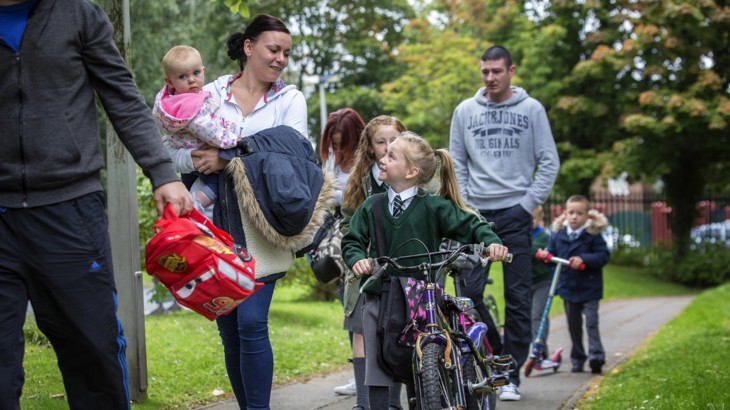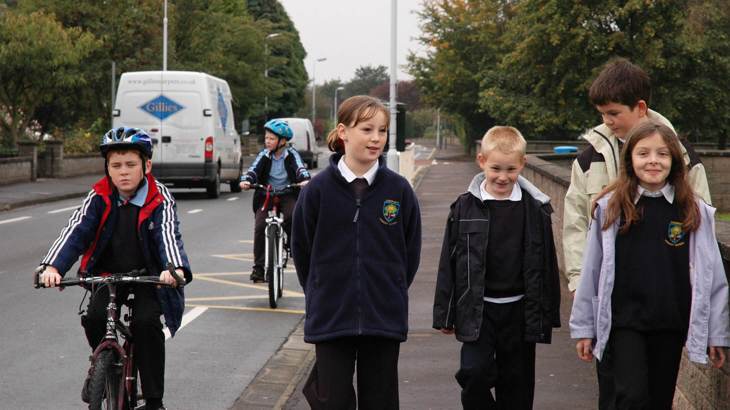The burning of fossil fuel may represent the biggest threat to the health of our children and is a primary source of global inequality and environmental injustice. What can we do to counter these challenges? How can we engage children in promoting agendas for change?

This blog is based on reflections following the publication of the Public Health England Review regarding interventions to improve outdoor air quality and public health.
Recent research argues that fossil-fuel combustion by-products are the world's most significant threat to children's health and future and are major contributors to global inequality and environmental injustice. This research emphasises the interconnectedness of toxic air pollutants and climate-altering greenhouse gas.
The argument runs that the compound effect of emissions on children’s development and health, and of the impacts of changing environments and resources, are having huge impacts on individuals and communities worldwide.
The consequence of these challenges is reflected in what a recent series in the Lancet described as a Global Syndemic. This research links the phenomena of obesity, undernutrition and climate change.
The paper draws on the links between human health and wellbeing, ecological health and wellbeing, social equity, and economic prosperity. It identifies the major systems driving the Global Syndemic as food, agriculture, transportation, urban design, and land use. (There are differences between the extent of emphasis that the two papers place on pollution relative to nutrition, but both acknowledge the interconnection between these factors, and both are emphatic about the role of climate change).
Elsewhere, research suggests that deaths attributable to air pollution are twice as high as previously estimated. There are numerous determinants of where these deaths are distributed, but there is growing consensus that they are concentrated in more deprived communities worldwide.
Another new study provides evidence that exposure to poor air in the US is disproportionately concentrated among minority ethnic groups. The paper reports that “black and Hispanic minorities bear a disproportionate burden from the air pollution caused mainly by non-Hispanic whites”, and describes a “pollution inequity”. Evidence of pollution inequity in the UK describes a disproportionate effect in poorer communities.

The publication of the Public Health England Review of interventions to improve outdoor air quality and public health is very timely. It makes a very useful contribution in terms of identifying approaches that can be applied to address air quality.
I am pleased to have been able to contribute to the study in some small way. But coming against a backdrop of growing evidence of global and local health challenges, inequality and environmental injustice, the question is: does it go far enough?
The PHE report treats air quality in isolation, rather than as part of a more complete systemic challenge; there is little or no discussion of carbon emissions, other health-detrimental factors, or social inequalities; some of the suggested remedial activities focus more on reducing exposure than on reducing emissions; and some of the suggested approaches disregard the realities of space and resources (I am particularly thinking of the suggestion that “redesigning cities so that people aren’t so close to highly polluting roads”, rather than reducing pollution on roads, for example).
But the report does present a lot of challenges to the central and local government. There are many issues of planning and policy that will need to be addressed if we are to reduce air pollution – and in so doing address other health, environment and equity issues.
In particular, some of the press coverage associated with the report majored on what it said about the school run. Interpretations were varied, from “'Schools should have 'no idling zones', Public Health England chief says” to “Health chiefs say parents should be banned from dropping off their children in a new fight on air pollution.”
And this is one of the areas where Sustrans is busy trying to make a difference. The Big Pedal and School Streets are initiatives which aim to work with schools to reduce emissions, raise physical activity, reduce inequality, and build awareness of the environmental challenge.
Will these initiatives eliminate the global environmental threat, restore fairness, and save lives worldwide? No. But they serve to demonstrate what is possible to improve the places we live, learn and travel.
Overcoming global inequality and environmental injustice, and effectively supporting human health and wellbeing, ecological health and wellbeing, social equity, and economic prosperity will require a whole lot more. But reducing the amount of fossil fuel combustion that each of us is responsible for will help. And addressing school travel is a good place to start.
We hope that the big Pedal and School Streets will prove really good mechanisms for engaging children in promoting agendas for change.
We urge people to get on board and support The Big Pedal and School Streets.





